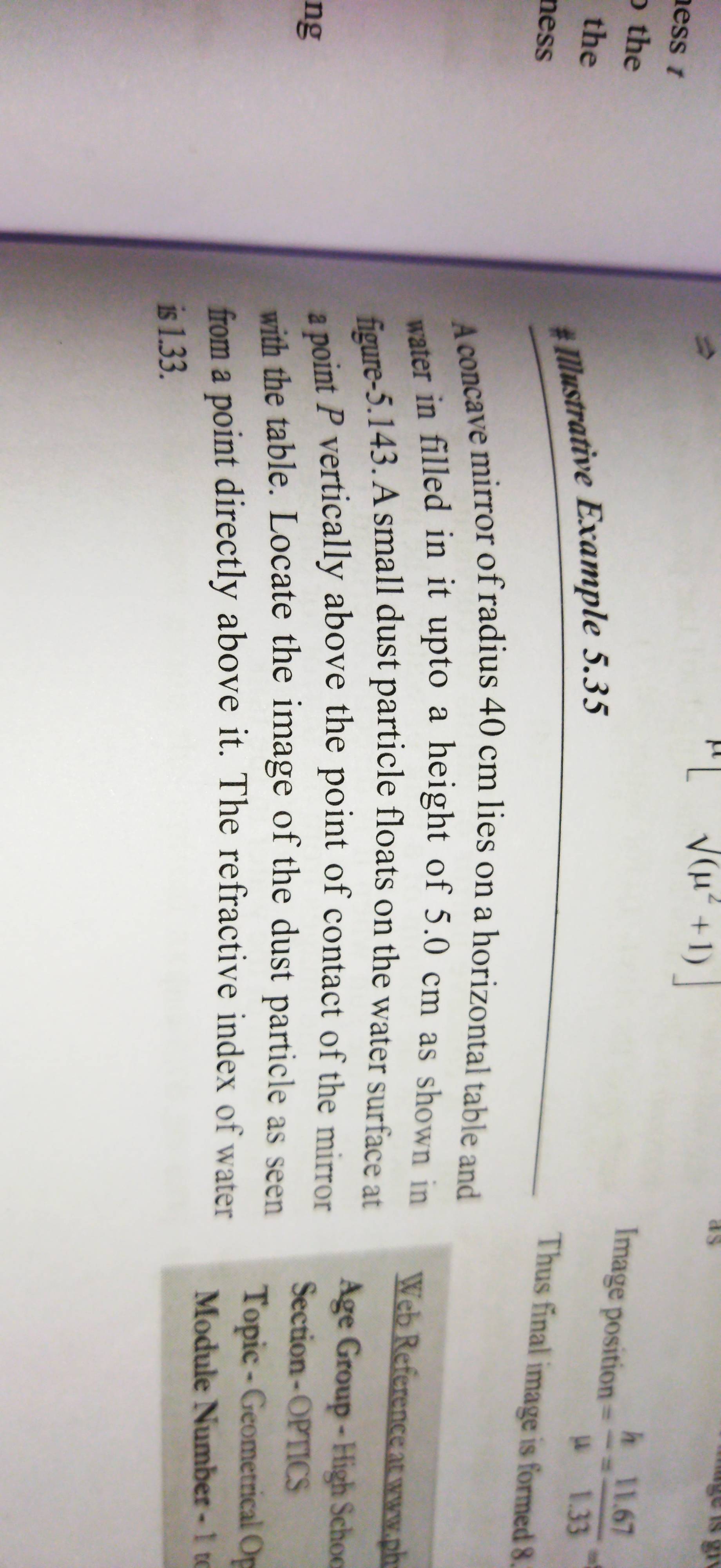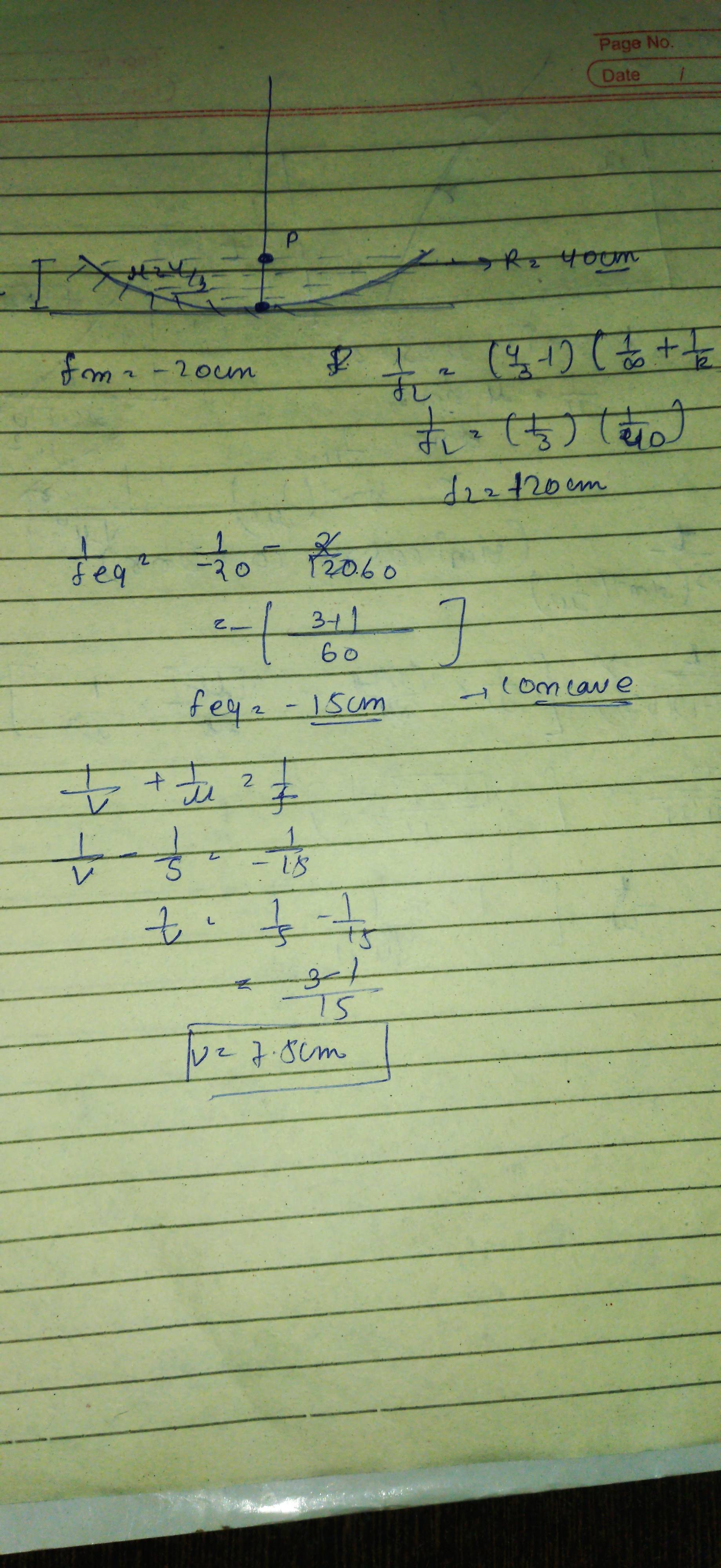Geometrical optics
Why can't we use the effective focal length then calculate the answer in this question ?

21 Replies
@Gyro Gearloose
Note for OP
+solved @user1 @user2... to close the thread when your doubt is solved. Mention the users who helped you solve the doubt. This will be added to their stats.Help please

Please check if anything's wrong ?
@hardcoreisdead
abi toh mein emi pe hu sir
Oh np
don't ping people if someone is willing to solve they will come
Concave mirror ke lie u jo hai
Wo to virtual object banega
Apparent depth ke karan
To u to 5/1.33 hua
But Maine to use ek lens hi man liya liquid Wale area ko
Plano convex
uh kr to skte hai but yaha object directly above dia hai ig yaha kuch plm hai
I thought of the same thing
mm sochna pdega
we good?
@GBBEAST hmm lens combine hote hai na, mirror kaise kar diya aapne
In a combination of lenses and mirror the equivalent acts as a mirror it is a concave mirror if f is negative and convex mirror if f is positive
In a combination of lenses the equivalent is a lens
sorry im not aware of this concept
is it given in physics galaxy
No problem
Yes its a question in the illustrations
i mean the concept?
Yeah it is there
its because the light rays are not refracting at the water interface
in our derivation of combination of lenses, we assume paraxial rays which traverse all the mediums
since the lightrays originate from the water medium, they are not being refracted at first
at least i think this is the explanation else i got no clue